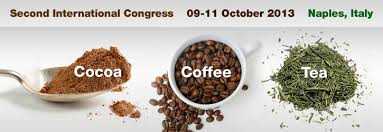Takeshita M.1, Chikama A. 1, Ochiai R. 1, Watanabe T. 1, Kataoka K. 1, Hashimoto H. 1, Yasunaga K. 1, Katsuragi Y. 1 1 R&D Health Care Food Research, Kao Corporation, Tokyo, Japan. E-mail: takeshita.masao@kao.co.jp
Coffee has various polyphenols, mainly chlorogenic acids (CGAs), which play a crucial role in the vascular endothelial. Animal studies have suggested that CGAs helps to lower blood pressure due to the increased NO production, whereas minor oxidative components such as hydroxyhydroquinone (HHQ) derived from green coffee beans generated by a roasting process, a source of reactive oxygen species, would counteract antihypertensive effects of CGAs.
Therefore, we have investigated to clarify health befits of an oxidative component-reduced (OC-R) coffee enriched with CGAs, in randomized, double-blind, clinical studies.
Studies A: The hypotensive effect of the OC-R coffee was examined in 41 high- normotensive and 59 mildly hypertensive men and women. The subjects were randomly assigned to either the active group (CGAs 299 mg and HHQ 0.05 mg/184 mL, n=49) or placebo group (CGAs 0 mg and HHQ 0.02 mg/184 mL, n=51), and consumed a can of test beverage daily for 12 weeks. Systolic blood pressure was significantly (p<0.05) lower in the active group than in the placebo group.
Studies B: The impact of HHQ on the hypotensive effect was examined in 38 high- normotensive and 60 mildly hypertensive men and women over 12 weeks. Systolic blood pressure was significantly (p<0.05) lower in the active group (CGAs 299 mg and HHQ 0.05 mg/184 mL, n=51) than in the control group (CGAs 299 mg and HHQ 1.69 mg/184 mL, n=47).
Study C: The anti-obesity effect of the OC-R coffee was examined in 109 obese men and women. Visceral fat area, body weight, and waist circumference were significantly (p<0.05) lower in the active group (CGAs 297 mg/185 g, n=53) than in the placebo group (CGAs 2 mg/185 g, n=56).
Study D: To investigate the possible mechanism underlying the anti-obesity effect of the OC-R coffee, energy metabolism after the consumption of the OC-R coffee was examined using an indirect calorie meter in a cross-over manner. Seven healthy men randomly consumed either a can of the active beverage (CGAs 359 mg/185 g) or placebo beverage (CGAs 0 mg/185 g) for a week. Postprandial oxygen consumption and fat utilization were significantly (p<0.05) enhanced in the active group compared with the placebo group.
In conclusion, daily consumption of coffee polyphenols may be useful for the management of elevated blood pressure and abdominal obesity linked to cardiovascular disease.


















